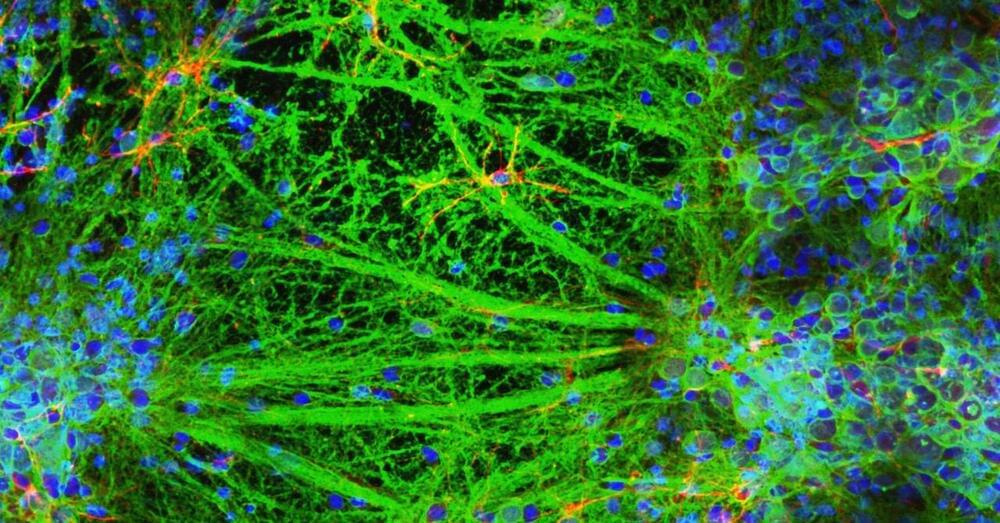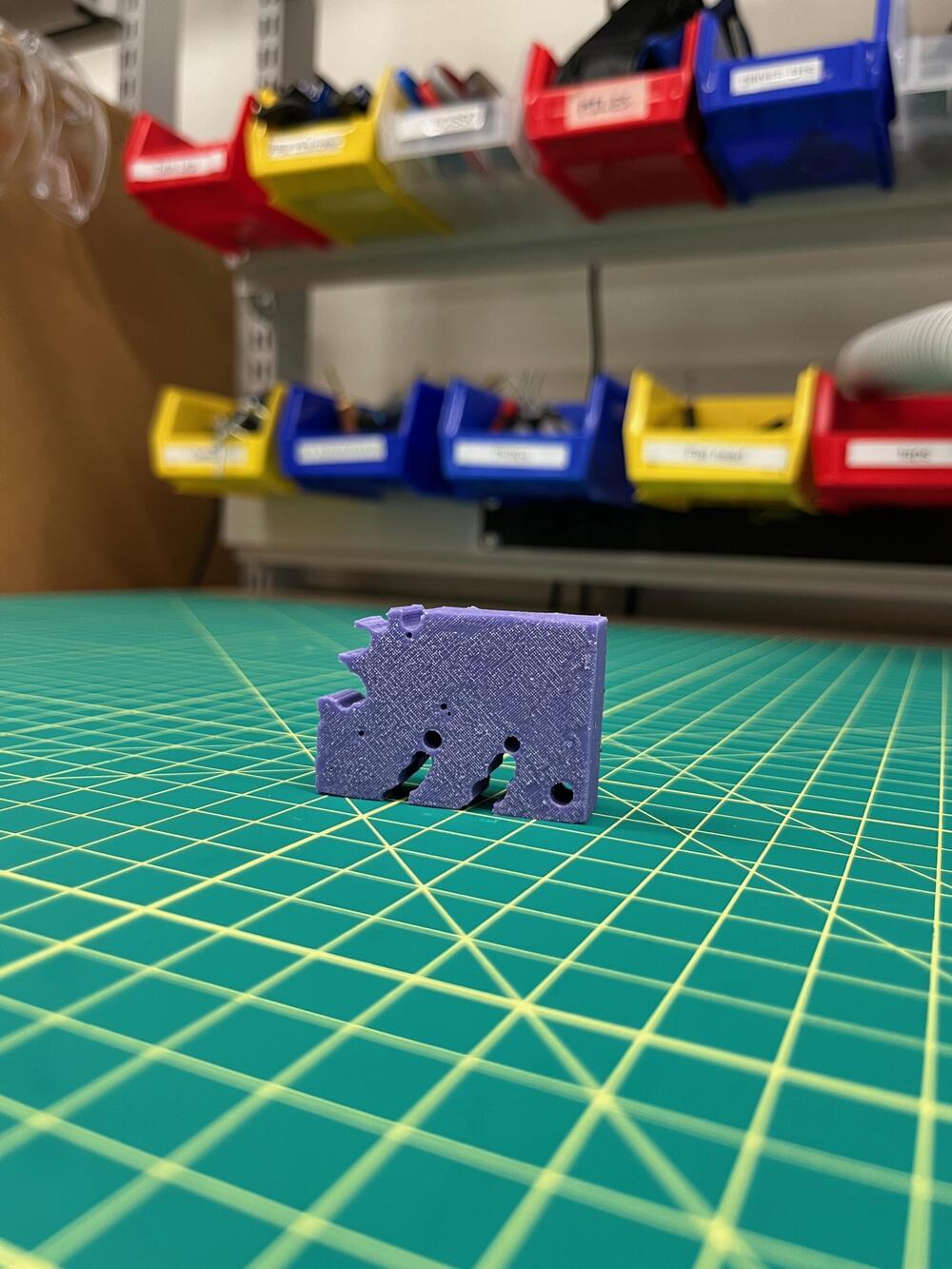Mini-brains that work and grow like their full-size counterparts could offer an alternative to animal testing, and advance the quest for personalized medicine.



ChatGPT is a hot topic at my university, where faculty members are deeply concerned about academic integrity, while administrators urge us to “embrace the benefits” of this “new frontier.” It’s a classic example of what my colleague Punya Mishra calls the “doom-hype cycle” around new technologies. Likewise, media coverage of human-AI interaction – whether paranoid or starry-eyed – tends to emphasize its newness.
In one sense, it is undeniably new. Interactions with ChatGPT can feel unprecedented, as when a tech journalist couldn’t get a chatbot to stop declaring its love for him. In my view, however, the boundary between humans and machines, in terms of the way we interact with one another, is fuzzier than most people would care to admit, and this fuzziness accounts for a good deal of the discourse swirling around ChatGPT.
When I’m asked to check a box to confirm I’m not a robot, I don’t give it a second thought – of course I’m not a robot. On the other hand, when my email client suggests a word or phrase to complete my sentence, or when my phone guesses the next word I’m about to text, I start to doubt myself. Is that what I meant to say? Would it have occurred to me if the application hadn’t suggested it? Am I part robot? These large language models have been trained on massive amounts of “natural” human language. Does this make the robots part human?

One of the most well-established and disruptive uses for a future quantum computer is the ability to crack encryption. A new algorithm could significantly lower the barrier to achieving this.
Despite all the hype around quantum computing, there are still significant question marks around what quantum computers will actually be useful for. There are hopes they could accelerate everything from optimization processes to machine learning, but how much easier and faster they’ll be remains unclear in many cases.
One thing is pretty certain though: A sufficiently powerful quantum computer could render our leading cryptographic schemes worthless. While the mathematical puzzles underpinning them are virtually unsolvable by classical computers, they would be entirely tractable for a large enough quantum computer. That’s a problem because these schemes secure most of our information online.


A new study finds artificial intelligence could help predict pancreatic cancer. Dr. Chris Sander, one of the co-authors of the study, joined CBS News to talk about the findings.
#news #ai #cancer.
CBS News Streaming Network is the premier 24/7 anchored streaming news service from CBS News and Stations, available free to everyone with access to the Internet. The CBS News Streaming Network is your destination for breaking news, live events and original reporting locally, nationally and around the globe. Launched in November 2014 as CBSN, the CBS News Streaming Network is available live in 91 countries and on 30 digital platforms and apps, as well as on CBSNews.com and Paramount+.
Watch CBS News: https://cbsn.ws/1PlLpZ7c.
Download the CBS News app: https://cbsn.ws/1Xb1WC8
Follow CBS News on Instagram: https://www.instagram.com/cbsnews/
Like CBS News on Facebook: https://facebook.com/cbsnews.
Follow CBS News on Twitter: https://twitter.com/cbsnews.
Try Paramount+ free: https://bit.ly/2OiW1kZ
For video licensing inquiries, contact: [email protected]

A team led by Northwestern University researchers has developed the first artificial intelligence (AI) to date that can intelligently design robots from scratch.
To test the new AI, the researchers gave the system a simple prompt: Design a robot that can walk across a flat surface. While it took nature billions of years to evolve the first walking species, the new algorithm compressed evolution to lightning speed—designing a successfully walking robot in mere seconds.
But the AI program is not just fast. It also runs on a lightweight personal computer and designs wholly novel structures from scratch. This stands in sharp contrast to other AI systems, which often require energy-hungry supercomputers and colossally large datasets. And even after crunching all that data, those systems are tethered to the constraints of human creativity—only mimicking humans’ past works without an ability to generate new ideas.

A team led by Professor Choi Hong-Soo in the Department of Robotics and Mechatronics Engineering at DGIST has discovered a method to enhance the penetration of magnetic nanoparticles into cancer cells and their magnetic hyperthermia effects through research on chain disassembly and magnetic propulsion mechanisms using a rotational magnetic field.
Published in the journal ACS Nano, their study focused on the delivery of magnetic therapeutic agents using magnetic fields, an area receiving attention in the field of cancer treatment. It is expected to contribute significantly by improving drug delivery efficiency and therapeutic effects in targeted cancer treatments.
Recently, the development of targeted therapeutics that selectively treat cancer cells has been gaining attention in the field of cancer treatment. Among them, research on magnetic carriers that target cancer cells using magnetic fields is underway. However, a problem arises when magnetic nanoparticles are exposed to a uniform magnetic field with a general form; they form long chains in the direction of the magnetic field, making penetration into cancer cells or tumors difficult and reducing the therapeutic efficacy.

Scholars at Carnegie Mellon University recently offered what they call a “High-Modality Multimodal Transformer,” which combines not just text, image, video, and speech but also database table information and time series data. Lead author Paul Pu Liang and colleagues report that they observed “a crucial scaling behavior” of the 10-mode neural network. “Performance continues to improve with each modality added, and it transfers to entirely new modalities and tasks.”
Scholars Yiyuan Zhang and colleagues at the Multimedia Lab of The Chinese University of Hong Kong boosted the number of modalities to a dozen in their Meta-Transformer. Its point clouds model 3D vision, while its hyper-spectral sensing data represents electromagnetic energy reflected back from the ground to fly-over images of landscapes.
The immediate payoff of multi-modality will simply be to enrich the output of a thing such as ChatGPT in ways that go far beyond the “demo” mode. A children’s storybook, a book with text passages combined with pictures illustrating the text, is one immediate example. By combining the language and image attributes, the kinds of pictures created by the diffusion process can be more subtly controlled from picture to picture.

Following the successful launch of Spotify’s AI-powered DJ feature and, more recently, added support for AI-translated podcasts, Spotify now appears to be developing another means of using AI in its app: AI-powered playlists. References discovered in the app’s code indicate the company may be developing generative AI playlists users could create using prompts.
The additions were uncovered by tech veteran-turned-investor Chris Messina, who posted screenshots of code in Spotify’s app that refer to “AI playlists” and “playlists based on your prompts.” He theorized that creating these may be an option within the Blend genre, where the tastes of different users are mixed to create a playlist with songs that everyone likes.